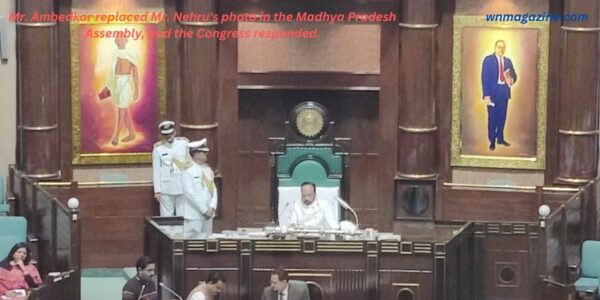Mr. Ambedkar replaced Mr. Nehru’s photo in the Madhya Pradesh Assembly, and the Congress responded.
2 min read
Mr. Ambedkar replaced Mr. Nehru's photo in the Madhya Pradesh Assembly, and the Congress responded.
The commencement of the 1st session of the 16th Madhya Pradesh Assembly on Monday, the 16th, was marked by controversy as the portrait of India’s first Prime Minister, Jawaharlal Nehru, situated behind the Speaker’s chair, was replaced with that of Dr. B.R. Ambedkar. The change sparked objections from the Congress party, who perceived it as a deliberate attempt by the Bharatiya Janata Party (BJP) to alter historical representations.
The first session after the elections
Also Read: well health tips in hindi wellhealth
During the proceedings led by pro-tem speaker Gopal Bhargava, newly-elected members were welcomed, initiating the administrative procedures for the four-day winter session—a week after the BJP government, headed by Chief Minister Mohan Yadav, assumed office.
Why controversy occurs
Notably, Congress expressed dissatisfaction with the replacement of Nehru’s portrait and demanded its restoration. The party asserted that while they welcomed the inclusion of B.R. Ambedkar’s picture, removing Nehru’s image was objectionable and hinted at a conspiracy to manipulate historical records. Congress MLA Ajay Singh emphasized Nehru’s significant role as a freedom fighter and called for the reinstatement of his portrait in the House.
In a counter move, Congress stated that they had proposed installing the portrait of B.R. Ambedkar as well, indicating a willingness to honor both leaders. However, their primary concern remained the removal of Nehru’s representation.
Congress, in support of Nehru’s portray
The controversy escalated as the BJP government, including Chief Minister Mohan Yadav and Leader of Opposition Umang Singhar, took oath on Monday. Senior BJP leader Narendra Singh Tomar was nominated for the position of assembly speaker.
Also Read: wellhealthorganic vitamin b12
Conclusion
Addressing the controversy, MP Legislative Assembly principal secretary AP Singh clarified that the decision to take down Nehru’s portrait was made because it was in poor condition. He attributed the placement of Ambedkar’s portrait to the former Speaker’s discretion.
As the session unfolded, tensions persisted, with Congress warning that if Nehru’s picture was not reinstated, their members might take matters into their own hands. The incident underscored the sensitivity surrounding historical symbols and their representation in the political arena.







